Japanese Houses on a Budget offer great options for those looking to rent or buy a home in Japan without overspending. From cozy countryside homes to affordable suburban properties, there are plenty of choices to suit your budget. Whether you’re planning to settle long-term or just need a rental, Japan has something for every lifestyle.
Discovering Japanese Homes: A Cultural Insight
Japanese residences embody the nation’s rich heritage, customs, and historical background. To truly appreciate this unique architectural style, one must consider how these cultural aspects blend seamlessly to form living spaces that go beyond mere functionality.
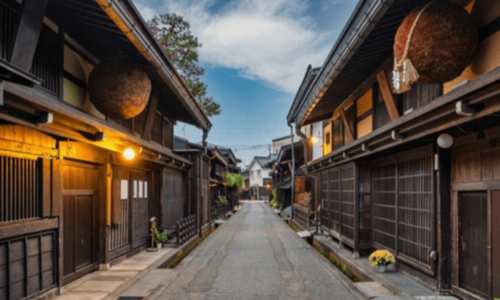
The Historical Journey of Japanese Building Traditions
The development of Japanese homes spans centuries, shaped by factors such as the country’s geography, climate, and the materials at hand. Traditional designs often emphasise harmony with nature, incorporating features like sliding shoji doors and tatami mats crafted from rice straw, offering both comfort and versatility.
- Cultural Importance: Japanese residences are built to encourage the seamless flow of natural light, fresh air, and outdoor elements, reinforcing a deep connection to the environment that fosters peaceful and balanced living spaces.
- Design Philosophy: The principle of wabi-sabi, which celebrates the beauty found in imperfection and transience, greatly influences Japanese architectural style, promoting simplicity and understated elegance.
- Regional Differences: Various parts of Japan showcase unique architectural traits shaped by their specific customs and weather conditions. For example, homes in snowy regions often have steeply pitched roofs to prevent snow buildup, while coastal dwellings may feature open designs to welcome ocean breezes.
Features of Traditional Japanese Home Design
Japanese residences are celebrated for their simplicity and efficient use of available space. Interiors often focus on practicality and a sense of calm, combining classic elements with contemporary touches.
- Open Layouts: Many homes feature spacious, open floor plans that foster a light, airy environment, making compact areas feel more expansive.
- Use of Natural Materials: Construction frequently incorporates wood, paper, and clay, supporting eco-friendly principles while adding warmth and comfort to living spaces.
- Harmony with Nature: Expansive windows and outdoor terraces create a seamless connection between inside and outside, encouraging occupants to stay connected with their surroundings.
Modern Trends Shaping Japanese Residences
Lately, contemporary trends have transformed Japanese home design by blending advanced technology with fresh architectural ideas.
- Lately, Japanese housing has evolved by blending advanced technology and fresh design concepts with tradition.
- Eco-Friendly Focus: Growing environmental awareness has led to many homes emphasising green building materials and energy-saving solutions.
- Smart Living: Cutting-edge smart home technologies are integrated seamlessly, offering convenience while preserving the classic Japanese look and feel.
- Cultural Blending: With increasing global influence, new designs often merge international architectural styles with traditional Japanese elements, resulting in innovative and diverse living spaces.
Crafting Japanese-Style Homes in Minecraft: Tips and Tricks
For gamers and creative builders alike, designing Japanese houses in Minecraft offers a fun challenge that balances artistic vision with traditional architectural elements.
Selecting Suitable Materials
Choosing the right blocks is essential to capture the authentic look of Japanese homes. Consider these options:
- Wooden Planks: Dark oak or spruce planks work well for structural beams, reflecting traditional wood tones.
- Stone Bricks: Use stone bricks for sturdy foundations and walls, emulating the strength of classic Japanese buildings.
- Glass Panes: Replace solid glass blocks with panes to replicate shoji screens, allowing soft, natural light to filter through sliding doors and windows.
Essential Design Elements for Your Minecraft Japanese House
To give your Minecraft Japanese house an authentic and eye-catching look, try adding these classic features:
- Tatami Flooring: Use wool or carpet blocks arranged in patterns to simulate the traditional tatami mats often found in Japanese interiors.
- Sliding Doors: Combine fences or gates with glass panes to recreate the delicate, translucent shoji doors characteristic of Japanese homes.
- Outdoor Gardens: Design tranquil Zen gardens or koi ponds around your build to capture the harmonious connection with nature that defines traditional Japanese living spaces.
Advice for Crafting Your Ideal Japanese House
Constructing a Japanese-style home in Minecraft calls for careful planning and imagination. Consider these useful pointers to achieve the best results:
- Design in Advance: Draft a clear floor plan before building to make sure the space is well-organised and reflects traditional Japanese layouts.
- Enhance with Nature: Add cherry blossom trees, bamboo groves, or small gardens around your home to boost its visual appeal and create a serene atmosphere.
- Thoughtful Lighting: Position lanterns or torches thoughtfully to accentuate key architectural details and keep your house warm and welcoming during nighttime.
Affordable Japanese Homes for Sale: How to Find Your Ideal Property
Looking for reasonably priced Japanese houses for sale can be both thrilling and challenging. Luckily, there are plenty of opportunities that fit within various budgets.
Navigating the Market
Japan’s real estate market differs widely depending on the area:
- City vs. Countryside: Major cities like Tokyo tend to have higher prices, whereas rural regions usually offer more budget-friendly homes.
- Property Condition: Older houses might need some repairs, but are often more affordable, presenting a chance for renovation projects or investments.
- Rules for Foreign Buyers: Non-Japanese residents can purchase property, but it’s important to be aware of the legal requirements and procedures involved.
Where to Discover Affordable Japanese Homes
Finding budget-friendly Japanese houses for sale means exploring several channels:
- Online Platforms: Websites such as Suumo and Homes.co.jp offer comprehensive listings with pricing details and neighbourhood insights.
- Local Realtors: Working with real estate agents who know the area well can help uncover less obvious options and streamline the process.
- Auctions and Foreclosures: Occasionally, homes are sold through auctions or foreclosure sales, providing chances to purchase below market rates.
Funding Your Home Purchase
Financial planning is essential when buying property in Japan. Main aspects to focus on are:
- Mortgage Choices: Explore various loan options, including those tailored for non-resident buyers.
- Renovation Expenses: If opting for an older house, factor in the costs of repairs and upgrades to customise the home to your liking.
- Currency Fluctuations: For international buyers, be mindful of how exchange rate changes can affect your overall budget and purchasing power.
Traditional Japanese Houses: Design and Architecture
Traditional Japanese homes showcase enduring design values developed over hundreds of years, blending beauty with practical living.
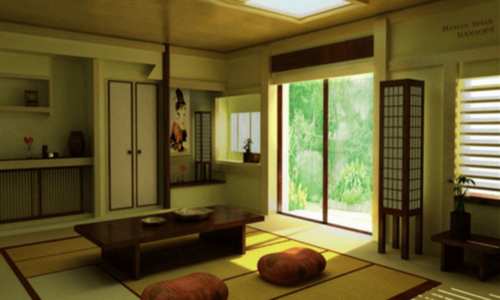
Core Features in Architecture
The distinctiveness of these houses lies in their focus on balance and simplicity.
- Tatami Mats: Made from woven straw, these mats cover the floors and embody cultural heritage, creating a natural and cozy atmosphere.
- Shoji Screens: Sliding panels made from wood and translucent paper that divide rooms and windows, letting in soft light while preserving privacy.
- Engawa Veranda: A slender walkway that wraps around the house, serving as a bridge between indoor and outdoor spaces.
Interior Layout and Design
The interiors of traditional Japanese homes emphasise calmness and simplicity. Key features include:
- Versatility: Thanks to sliding partitions and adaptable furniture, rooms can easily transform to suit social events or quiet moments alone.
- Abundant Natural Light: Generous windows and open spaces welcome sunlight, fostering a peaceful and refreshing atmosphere.
- Zen Aesthetics: Many houses integrate Zen principles, highlighting harmony, simplicity, and a close relationship with nature.
Steps toward maintaining and refurbishing
As modern developments grow, preserving traditional Japanese houses becomes increasingly important.
- Cultural Heritage Programs: Dedicated organisations work to safeguard and refurbish these historic homes, ensuring their legacy continues.
- Community Participation: Local groups often take active roles in restoration efforts, aiming to preserve traditional skills and cultural identity.
- Tourism Use: Some restored homes are converted into guesthouses or museums, offering visitors an authentic glimpse into Japan’s architectural traditions.
Understanding Japanese House Names: A Comprehensive Guide
The vocabulary used to describe Japanese homes can be complex, with each term carrying deep cultural meaning and historical context.
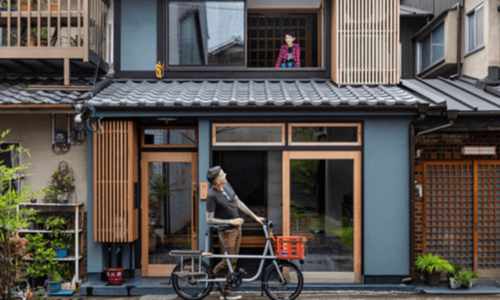
Popular Terminologies and Their Roles
Knowing these names can enrich your appreciation of Japanese architecture:
- Mizukoshi: Meaning “water crossing,” this refers to residences built close to rivers or waterways, highlighting a harmonious relationship with nature.
- Kominka: Literally “old house,” these are traditional rural farmhouses featuring thatched roofs and exposed wooden beams.
- Gassho-zukuri: Recognisable by its steep, triangular roofs resembling hands in prayer, this style is typical in mountainous regions where heavy snowfall is common.
Regional House Names
House names often differ depending on location, reflecting local customs and climate:
- Taisha: Common in western Japan, these homes are situated near shrines, symbolising spiritual significance.
- Kyo-machiya: Traditional townhouses from Kyoto, noted for their long, narrow design that efficiently uses space while preserving cultural charm.
- Hokkaido Houses: Adapted for the severe cold and heavy snow of Japan’s northernmost island, featuring designs suited to harsh winters.
Why Terminology Matters
Grasping these terms deepens understanding and respect for Japanese heritage:
- Cultural Identity: Each name carries stories and customs passed down through generations, weaving into Japan’s rich historical fabric.
- Architectural Appreciation: Familiarity with the terminology helps reveal regional architectural variations and inspires contemporary design interpretations.
Contemporary Homes in Japan: Creative Architecture for Today’s Lifestyle
Contemporary Japanese homes reflect a seamless blend of tradition and modernity, where function, aesthetics, and environmental awareness come together to shape dynamic living spaces.
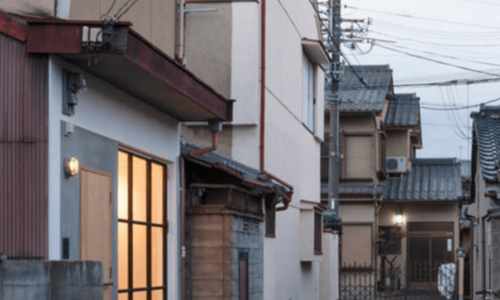
Embracing Minimalism
Simplicity lies at the core of modern Japanese home design, fostering serene environments:
- Open Layouts: Flexible floor plans eliminate unnecessary partitions, enhancing flow and adaptability for various lifestyles.
- Natural Illumination: Expansive windows and transparent facades allow ample daylight to fill interiors, reducing the need for artificial lighting.
- Intentional Design: Minimalist spaces reduce clutter, helping create calming atmospheres that encourage mindfulness and balance.
Smart Use of Space
Urban density in Japan drives architectural ingenuity, particularly in space efficiency:
- Multi-Functional Interiors: Sliding partitions, foldable furniture, and convertible rooms support versatile daily use.
- Vertical Expansion: Narrow plots are creatively developed into multi-story homes, maximising function without requiring large footprints.
- Compact Outdoor Areas: Balconies, pocket gardens, and rooftop terraces introduce greenery into urban homes, promoting a connection with nature.
Sustainable Living
Modern Japanese architecture emphasises sustainability and environmental responsibility:
- Eco-Conscious Technology: Features like solar panels, energy-efficient insulation, and low-consumption appliances contribute to greener homes.
- Natural and Recycled Materials: Use of wood, bamboo, and recycled elements reduces environmental impact while maintaining aesthetic warmth.
- Indoor-Outdoor Harmony: Incorporating plants, courtyards, and natural finishes supports biophilic design principles that boost well-being.
Capturing Japanese Homes on Paper: Tools and Skills for Art Enthusiasts
Illustrating Japanese houses offers artists a unique opportunity to blend technical skill with cultural appreciation. These architectural forms are rich in detail, structure, and symbolic meaning, making them a captivating subject for sketching or painting.
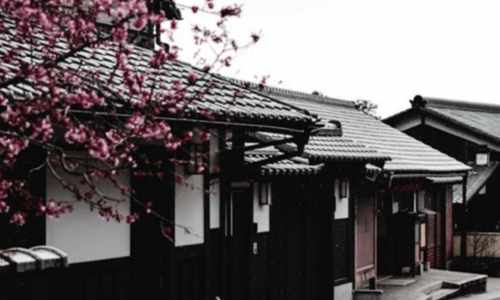
Core Techniques for Architectural Accuracy
To authentically portray Japanese houses, consider applying the following artistic methods:
- Mastering Perspective: Utilise one-point or two-point perspective to achieve architectural accuracy and convey spatial depth. This is especially helpful when drawing sloped roofs, sliding doors, and layered structures.
- Precision in Line Art: Use fine, consistent lines to emphasise the clean geometry found in Japanese homes. Features like wooden beams, roof tiles, and latticed windows benefit from deliberate, controlled strokes.
- Adding Texture and Detail: To bring life to your drawing, illustrate textures like rice-straw tatami mats, wooden siding, or paper shoji screens. Even subtle shading or cross-hatching can suggest material differences and add dimension.
Highlighting Cultural and Aesthetic Elements
Incorporating traditional motifs and stylistic elements will enhance the authenticity of your artwork:
- Focus on Roof Design: Traditional Japanese roofs, such as irimoya (hip-and-gable) or gassho-zukuri (steep, thatched), are defining features. Capture the curvature and overlapping tiles with attention to symmetry and proportion.
- Include Garden Features: Adding stone lanterns, koi ponds, or bonsai elements in the surrounding landscape complements the home and reflects its integration with nature.
- Play with Light and Shadow: Use soft contrasts to mimic the filtered light seen through shoji screens or under eaves. This helps set a tranquil mood, typical of traditional Japanese interiors.
Developing a Personal Style
While technical accuracy is important, infuse your drawings with your artistic voice:
- Experiment with Media: Try using ink and wash techniques for a traditional look, or digital tools for precision and versatility.
- Study References: Analyse real-life structures, historical prints, or modern interpretations to understand how forms evolve across time and region.
Drawing Japanese houses is not just about architecture; it’s about capturing a sense of place and cultural resonance. With practice and sensitivity to detail, artists can create compelling works that honour the timeless elegance of Japanese design.
Renting Japanese Houses: Key Insights for Newcomers
Choosing to rent a house in Japan offers not only a place to live but also a chance to experience the country’s rich culture or enjoy modern conveniences, depending on your choice. To make the most of this opportunity, it’s essential to understand the rental process thoroughly.
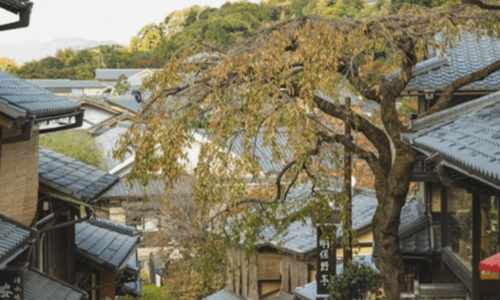
Types of Rental Housing in Japan
Japan provides a variety of rental options suited to diverse lifestyles and financial plans:
- Traditional-Style Residences: These homes feature iconic elements like tatami flooring, shoji screens, and manicured gardens, giving tenants an authentic Japanese living experience.
- Contemporary Apartments: Found mainly in metropolitan areas, these units come with up-to-date facilities and are often located near train stations for convenience.
- Shared Living Spaces (Share Houses): Ideal for those seeking social interaction and lower rent, these shared homes offer communal kitchens and living areas.
Understanding How Rentals Work in Japan
Grasping the key steps in the rental journey can help avoid surprises:
- Rental Contracts: Review all clauses carefully, especially those related to deposits, repair duties, and rules for shared amenities.
- Using a Real Estate Agent: Agents are valuable resources, often helping tenants find homes that align with their needs and explaining legal terms.
- Communication Challenges: Some agencies provide English support, but basic knowledge of Japanese can make the experience smoother.
Important Budget Items to Prepare Ahead of Your Move-In
Renting in Japan comes with several upfront and ongoing expenses:
- Upfront Fees: Expect to pay items like “key money,” deposits, and realtor commissions at the start, which may amount to several months’ rent.
- Monthly Bills: Utilities such as electricity, water, gas, and internet are usually billed separately.
- Furniture Needs: Many homes are unfurnished, so factor in the cost of purchasing or renting essential household items.
Buying Japanese Homes in Tokyo: A Snapshot of the Market
Purchasing a home in Tokyo presents a mix of promise and complexity. Whether you’re an investor or looking for long-term residence, the market has much to offer.
Noteworthy Market Patterns
The housing landscape in Tokyo is constantly evolving due to social and economic influences:
- Cityward Movement: Job seekers continue to gravitate toward Tokyo, pushing up property values in prime districts.
- Old Home Makeovers: Buying and renovating aging homes has become a popular strategy, allowing for creative customisation and potential savings.
- Global Buyer Appeal: More foreign nationals are entering the market, drawn by favourable exchange rates and Tokyo’s international appeal.
In-Demand Districts for Buyers
Several areas in Tokyo consistently attract attention for their livability and amenities:
- Shibuya: A hub for young professionals and creatives, offering a dynamic mix of housing styles.
- Setagaya: Favoured by families, this district boasts ample green space, good schools, and a calm atmosphere.
- Taito: Ideal for those seeking history and culture, Taito features preserved architecture and traditional charm.
Home Financing in Tokyo
Getting the right financing is a key part of buying a house in Tokyo. Whether you’re l resident or an international buyer, there are several paths to explore:
- Domestic Bank Loans: Many Japanese banks offer housing loans that suit a variety of financial profiles. These institutions often provide more flexible and personalised options compared to overseas lenders, especially for those with a stable income and residency status in Japan.
- Government Support Schemes: Japan has initiatives to support first-time homebuyers, especially in suburban or less populated areas, and some of these benefits may apply to purchases in parts of Tokyo as well.
- Viewing Property as Investment: For buyers interested in long-term value, understanding market trends, such as property appreciation and rental potential, can turn a house purchase into a smart financial move.
Interior Design in Japanese Homes: Blending Tradition with Innovation
Japanese homes are known for their serene, clean, and balanced interiors. While they continue to embrace time-honoured principles, today’s designs reflect a fusion of old and new.
Core Concepts of Japanese Interior Aesthetics
The core concepts shaping interior design in Japanese homes are deeply rooted in cultural meaning:
- Minimalist Approach: Spaces are intentionally uncluttered, with a strong focus on functionality and open layouts.
- Natural Connection: Wood, stone, paper, and natural light play key roles in creating a soothing, nature-inspired ambience.
- Purpose-Driven Design: Each element, be it a tatami mat or a simple table, combines beauty with practicality.
Modern Design Trends Taking Hold
Today’s Japanese homes showcase a blend of timeless style and contemporary innovation:
- Fusion of Old and New: Traditional architecture meets sleek, modern elements, think sliding doors paired with clean-lined furniture and neutral palettes.
- Sustainable Living: There’s a growing preference for green materials such as bamboo, recycled timber, and eco-conscious fabrics.
- Texture and Detail: More homeowners are incorporating feature walls using washi paper, wood grain patterns, or nature-themed wallpapers to add depth and personality.
Infusing Homes with Character
Adding personal and cultural elements is an integral part of the Japanese home:
- Cultural Decor: Items like calligraphy, pottery, or ikebana flower arrangements allow residents to express their individuality and heritage.
- Seasonal Touches: Rotating decorations to reflect seasonal changes, like cherry blossom accents in spring or warm textiles in winter, enhances the connection to nature.
- Craft and Artistry: Handcrafted furniture and local artisan pieces are highly valued, adding uniqueness and storytelling to the living space.
Conclusion
To conclude, homes in Japan beautifully embody cultural heritage and a close relationship with nature, blending age-old aesthetics with modern living. Whether you appreciate traditional charm or wish to personalise your space, these residences offer enduring elegance. For professional guidance on renting or purchasing property in Japan, explore An Lac – your trusted partner in finding the perfect home.



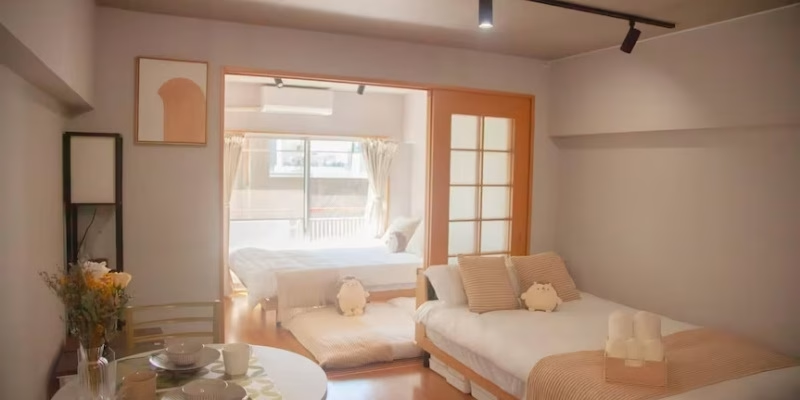

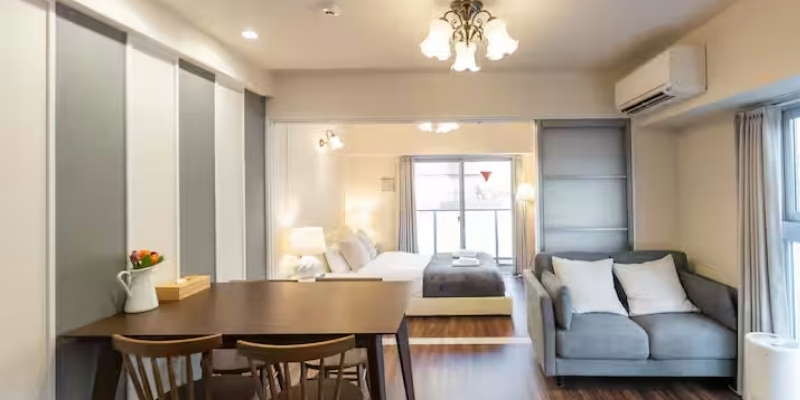
Leave a Reply